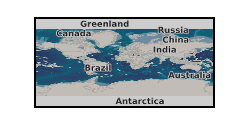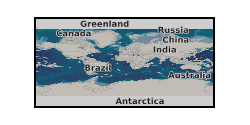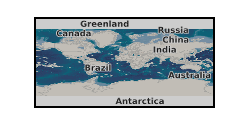Geomicrobiology
Type of resources
Available actions
Topics
Keywords
Contact for the resource
Provided by
Years
Formats
Representation types
Update frequencies
-

The data are related to the NERC's Security of Supply of Mineral Resources Catalyst Grant NE/L002361/1: MM-FREE - Mineral-Microbe interaction role in concentration and Fractionation of Rare Earth Elements and consist of: 1. document on the research priorities from an industry/stakeholders viewpoint to devise a strategy for building biomining into a real opportunity for mineral extraction of rare earth elements. 2. poster reporting literature review on "Using microbes to recover rare earths with low environmental impact"
-

NERC Grant NE/M011488/1 ICP bulk chemistry as wt% oxide or elemental ppm of limonites from Acoje (Philippines), Caldag (Turkey), Nkamouna (Cameroon), Piaui (Brazil) and Shevchenko (Kazakhstan) laterite deposits; reduced sulphide ore from Thakaringa Mine (Australia); processing residues from the Kevitsa Mine (Finland). The data were acquired during the NERC SoS Minerals CoG3 project between 2015 and 2018 by ALS Global using either lithium borate fusion or 4 acid digestion. These data were used to assess bulk geochemistry, and the Co and Ni loading of the resources. This may be useful within the mining sector, resource assessment, processing or prospecting, geo- or material scientists and processing engineers / metallurgists. NERC grant: CoG3: The geology, geometallurgy and geomicrobiology of cobalt resources leading to new product streams
-

Loan IDA number - IDA271576. No data was obtained for microbial cultivation experiments with core samples SSK111460 and SSK111461 from UKGEOS Glasgow Observatory, borehole GGC01. Samples and data are derived from the UK Geoenergy Observatories Programme funded by the UKRI Natural Environment Research Council and delivered by the British Geological Survey. Attached document described methodology of enriching sandstone core (SSK111461) in different media types and shale core (SSK111460) in synthetic groundwater. No microbial growth was seen after 7 months.
-

Sample list and experimental conditions. Ilumina Mi Sequencing OTU results for samples from Acoje Nickel Laterite, Philippines and Shevchenko, Ukraine. Illumina Mi Sequencing Results from Acoje, Philippines and Shevchenko Ukraine. These data are from a proof of concept study examining the bioextraction of cobalt and nickel from laterites stored at the Natural history Museum. The data here represent the sequencing of the microbial populations in the laterite samples from Acoje, Philippines, and Shevchenko, Ukraine.
-

Microbial DNA concentrations from DNA extraction using Qiagen PowerSoil Pro DNA Extraction kit and subsequent Polymerase Chain Reaction (PCR) from core samples collected and preserved for microbiology (SSK105556 and SSK105560) from UKGEOS Glasgow Observatory, borehole GGC01. DNA extractions and subsequent amplification using PCR indicate levels of microbial DNA below detection limits. NERC grant SHAPE-UK NE/R018006/1.
 NERC Data Catalogue Service
NERC Data Catalogue Service